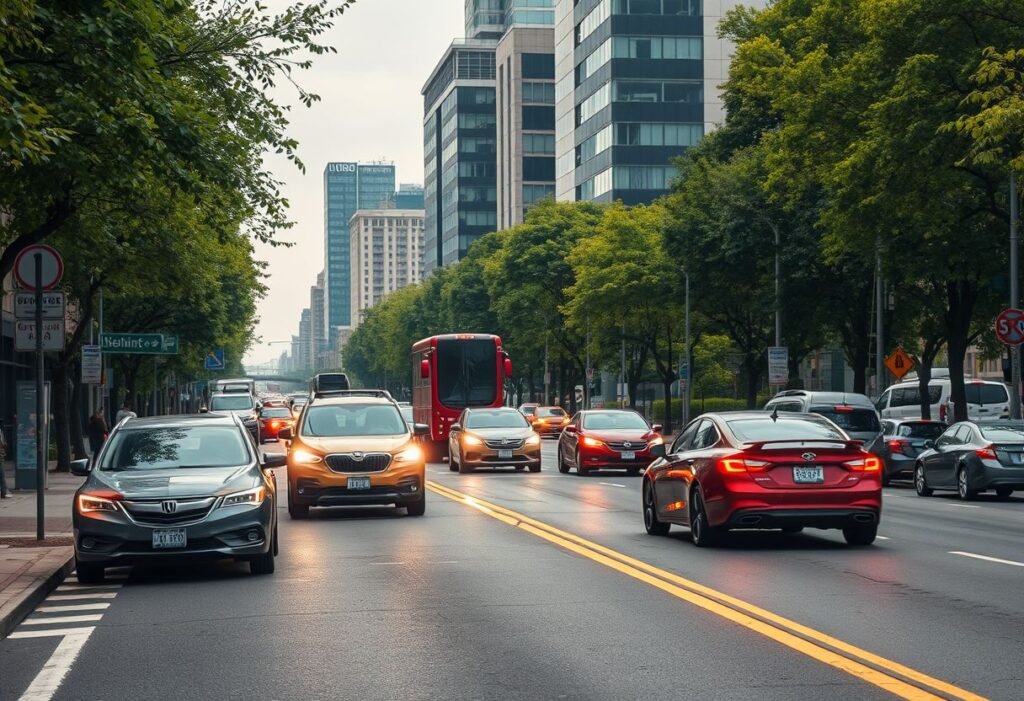The rise of autonomous vehicles represents a significant innovation in transportation and traffic management. These vehicles not only promise safer roads but also have the potential to alleviate congestion and optimize traffic flow. As we explore the impact of these self-driving cars on traffic management, it is essential to recognize how they can reshape urban environments, influence policy decisions, and enhance transportation systems.
The Role of Autonomous Vehicles in Traffic Optimization
Autonomous vehicles are equipped with advanced technologies, such as machine learning and sensor integration, which allow them to communicate with each other and traffic management systems in real-time. This capability enables real-time traffic flow optimization, reducing bottlenecks and improving overall road efficiency. By utilizing vast data generated from autonomous vehicles, urban planners can develop more effective traffic management strategies that are tailored to specific timeframes and situations, thereby enhancing the overall transportation infrastructure.
Reducing Traffic Accidents through Technology
One of the most significant benefits of autonomous vehicles is their potential to dramatically decrease traffic accidents. With their state-of-the-art safety features, these vehicles can react faster than human drivers, significantly reducing the likelihood of collisions. For instance, adaptive cruise control and emergency braking systems are designed to assist in preventing accidents caused by human error, which accounts for a significant percentage of road incidents. This innovation not only increases road safety but also lowers the economic costs associated with traffic accidents.
Impact on Traffic Flow and Congestion
Traffic congestion is a pressing issue in many urban areas. Autonomous vehicles can help mitigate this problem by improving traffic flow and reducing the volume of cars on the road. These vehicles can optimize routes based on real-time traffic data and coordinate their movement, leading to more efficient trips. By decreasing reliance on personal vehicles, cities may also see a reduction in congestion and pollution levels, promoting a cleaner and more sustainable urban environment.
The Future of Public Transportation
The integration of autonomous vehicles into public transport systems is another innovation that holds great promise. With the potential to operate in a fleet, autonomous vehicles can provide flexible, on-demand transport services that complement traditional public transport methods. This can lead to improved accessibility for people who are unable to rely on conventional transport due to mobility challenges. Additionally, deploying autonomous shuttles in underserved areas can enhance overall public transport efficiency and decrease operational costs.
Policy Implications and Regulations
The rise of autonomous vehicles necessitates a reevaluation of current traffic management policies and regulations. Governments must work collaboratively with technology developers to create an effective regulatory framework that ensures the safe deployment of autonomous vehicles. This includes establishing standards for communication protocols between vehicles and infrastructure, as well as addressing liability and insurance concerns in the event of accidents involving autonomous vehicles.
Conclusion: Embracing Technological Change
As we embrace the technological advancements brought by autonomous vehicles, it is crucial to consider their impact on traffic management. With the ability to enhance safety, improve traffic flow, and revolutionize public transport, these vehicles represent a transformative change in how we navigate urban spaces. Future innovations within this field will likely yield even greater benefits as we develop and adapt our traffic management systems to better accommodate these new forms of transportation.
Disclaimer: This article is for informational purposes only and does not constitute legal advice regarding autonomous vehicles or traffic management.





















